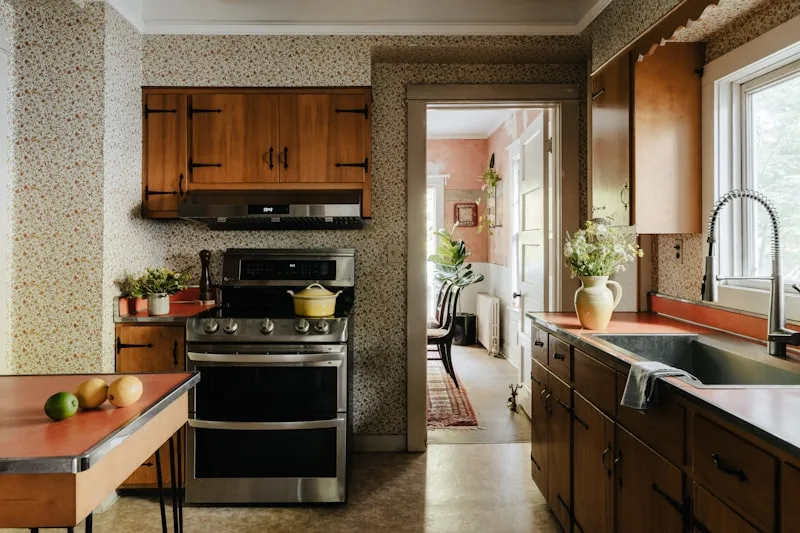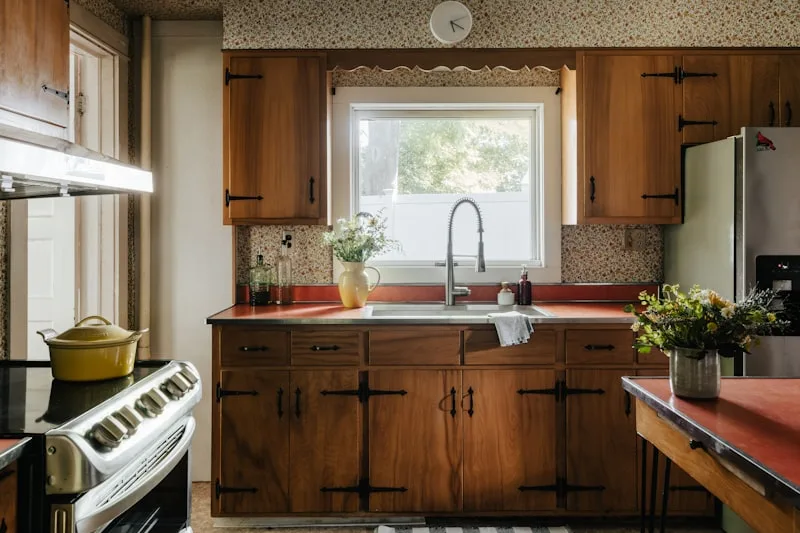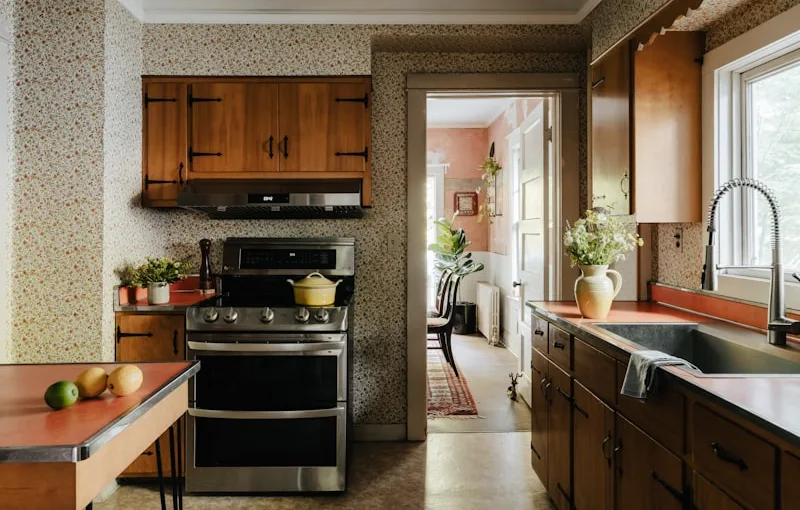First off, let’s talk about practicality. That space is often there to accommodate the natural settling of your home. Houses aren’t static; they shift and settle over time. If cabinets were installed flush to the floor, any movement could lead to cracks or misalignment. Think of it like a pair of shoes that need a little wiggle room—too tight, and you’re in for a world of discomfort!
Another reason for this gap is cleaning. Imagine trying to sweep or mop under those cabinets if they were sitting directly on the floor. It would be a nightmare! That little space makes it easier to keep your kitchen spick and span. Plus, it helps prevent moisture from getting trapped underneath, which can lead to mold and mildew. Nobody wants that!
And let’s not forget about aesthetics. That gap can create a visual break, making your kitchen feel more open and airy. It’s like the difference between wearing a fitted shirt versus a loose one; sometimes, a little breathing room can make all the difference in how things look.
So, while it might seem like wasted space, those gaps serve some pretty important purposes. They’re a blend of practicality, cleanliness, and style, all rolled into one. Next time you glance at your cabinets, you might just appreciate that little space a bit more!
The Mystery of the Gap: Why Kitchen Cabinets Leave Space Between the Floor
First off, that gap isn’t just for show. It serves a purpose! Think of it as a safety net for your cabinets. When you spill something (and we all do, right?), that space allows for easy cleaning. No more awkwardly maneuvering a mop or vacuum around the base of your cabinets. It’s like having a built-in cleaning assistant!
But wait, there’s more! This gap also helps with ventilation. Kitchens can get steamy, especially when you’re whipping up a storm. That little space allows air to circulate, preventing moisture buildup that could lead to mold or warping. Imagine your cabinets as a cozy little house; they need to breathe just like we do!
Now, let’s talk aesthetics. That gap can create a sleek, modern look. It gives your kitchen a sense of openness, making it feel less cramped. Plus, it’s a great way to showcase your flooring. Whether you’ve got stunning tiles or beautiful hardwood, that space lets your floor shine like the star it is.

And here’s a fun fact: that gap can also accommodate uneven floors. Not every home has perfectly level surfaces, and those little spaces can help cabinets sit flush without wobbling. It’s like a little cushion for your cabinets, ensuring they stand tall and proud.
Underfoot: Exploring the Reasons Behind Wasted Space in Kitchen Cabinet Design
First off, think about how we use our kitchens. They’re not just cooking zones; they’re the heart of our homes. Yet, many cabinets are designed with a one-size-fits-all approach, leaving us with awkward nooks and crannies that are practically begging for a purpose. Ever tried to fit a tall bottle of olive oil in a cabinet that’s just a smidge too short? It’s like trying to fit a square peg in a round hole—frustrating, right?
Another culprit is the lack of customization. Many homeowners settle for standard cabinet sizes, which can lead to those annoying gaps. Imagine a puzzle with missing pieces; it just doesn’t feel complete. Custom cabinets can be a game-changer, allowing you to maximize every inch of space. Think of it as tailoring a suit—when it fits just right, it looks and feels amazing.
And let’s not forget about the vertical space! Many cabinets stop short of the ceiling, leaving a dusty shelf that’s more of a storage graveyard than a functional area. Why not reach for the stars? Utilizing that upper space can transform your kitchen into a storage haven, making it feel more organized and spacious.
From Aesthetics to Functionality: The Hidden Purpose of Space Beneath Kitchen Cabinets
Imagine your kitchen as a stage, and the cabinets are the stars. But what about the space beneath? It’s like the backstage crew, working tirelessly to support the show. This area can be a game-changer for both aesthetics and functionality. For starters, it can be a perfect spot for clever storage solutions. Think about it: instead of letting that space go to waste, why not slide in some pull-out drawers or baskets? They can hold everything from pots and pans to those pesky kitchen gadgets that always seem to disappear.
But it’s not just about storage. The space beneath your cabinets can also enhance your kitchen’s overall look. Picture this: a sleek, modern kitchen with under-cabinet lighting that casts a warm glow on your countertops. It’s like adding a spotlight to your culinary masterpiece! This lighting not only elevates the ambiance but also makes cooking and prepping food a breeze.
And let’s not forget about cleaning. That space can be a nightmare to reach, but with the right design, it can be a breeze. Consider installing a toe-kick drawer that allows you to easily access cleaning supplies or even a small vacuum. It’s like having a secret weapon against crumbs and spills!
Cabinet Conundrum: Is the Space Between Your Kitchen Cabinets and the Floor Really Necessary?
First off, that gap isn’t just there for show. It serves a purpose! It allows for air circulation, which can help prevent moisture buildup. Think of it as your kitchen’s breathing space. Without it, you might find yourself dealing with mold or mildew, especially in humid climates. Yikes, right?
But let’s be real—who wants to clean that space? It’s like the Bermuda Triangle of your kitchen. You toss a few crumbs in there, and suddenly, they vanish into thin air. If you’re a neat freak, that gap can feel like a personal affront. So, what are your options?

Some folks choose to fill that space with decorative toe kicks or even pull-out drawers. Imagine turning that dead zone into a hidden treasure trove for your kitchen gadgets! It’s like finding a secret compartment in your favorite video game—suddenly, that space becomes functional and fun.
On the flip side, if you’re going for a sleek, modern look, you might want to keep that gap. It can create a sense of openness, making your kitchen feel larger than it is. Plus, it’s easier to clean the floor without those pesky cabinets getting in the way.
So, is that space really necessary? It depends on your style and needs. Whether you embrace it or fill it, that gap can be a game-changer in your kitchen design!
Maximizing Your Kitchen: Creative Solutions for the Wasted Space Under Cabinets
First off, think about adding pull-out drawers. These nifty little additions can turn that dark abyss into a treasure trove of storage. Imagine sliding out a drawer filled with spices or baking sheets instead of awkwardly bending down to rummage through a cluttered cabinet. It’s like having a secret compartment that makes cooking a breeze!
Next, consider installing a small rolling cart. This is not just any cart; it’s your new best friend! You can tuck it away when not in use, but when it’s time to whip up a meal, roll it out for easy access to your favorite utensils or ingredients. It’s like having a mini kitchen on wheels!
And let’s not forget about the power of hooks and racks. By hanging pots, pans, or even mugs from the underside of your cabinets, you’re not just saving space; you’re creating a charming, rustic vibe. It’s like turning your kitchen into a cozy café where everything is within arm’s reach.
Lastly, think vertical! Use stackable bins or tiered organizers to make the most of that vertical space. It’s like building a mini skyscraper of kitchen supplies, ensuring everything is visible and easy to grab. Who knew that wasted space could become a stylish storage solution?
The Design Dilemma: Why Kitchen Cabinets Often Leave Unused Space on the Floor
So, why does this happen? Well, kitchen cabinets are typically designed to maximize storage and functionality, but in the process, they can create these odd gaps. Think of it like a puzzle where some pieces just don’t fit together. Designers often prioritize aesthetics and ease of cleaning, which can lead to those frustrating voids. You might find yourself wondering, “Why didn’t they just extend the cabinets to the floor?”
Another reason for this design choice is the need for ventilation. In some cases, especially with appliances like dishwashers, leaving a little space allows for air circulation. It’s like giving your kitchen a breath of fresh air! But let’s be real—this doesn’t mean that empty space has to be a design flaw.
Imagine transforming that unused area into a cozy nook for plants or a stylish storage solution. You could even add a few decorative baskets or a small bench. It’s all about rethinking how we use that space. Instead of letting it sit there like a forgotten sock, why not turn it into a functional part of your kitchen?
Frequently Asked Questions
Are there design options to minimize wasted space in kitchen cabinets?
Utilizing design options such as pull-out shelves, corner cabinets, and vertical dividers can significantly reduce wasted space in kitchen cabinets. Incorporating adjustable shelving and drawer organizers also maximizes storage efficiency, allowing for better organization and accessibility of kitchen items.
Why is there a gap between kitchen cabinets and the floor?
The gap between kitchen cabinets and the floor is designed for several practical reasons. It allows for easier cleaning, prevents moisture damage to the cabinets, and accommodates uneven flooring. This space also provides ventilation and helps in the installation of flooring materials, ensuring a seamless look and functionality.
Can I fill the space between my kitchen cabinets and the floor?
Filling the space between kitchen cabinets and the floor is possible and can enhance the aesthetics and functionality of your kitchen. Options include using trim or molding to create a seamless look, or installing toe kicks to cover the gap. This can help prevent dirt accumulation and improve the overall appearance of your cabinetry.
How does the gap affect kitchen cleaning and maintenance?
Gaps in kitchen surfaces can trap food particles and grease, making cleaning more challenging. Regular maintenance is essential to prevent buildup in these areas, which can lead to hygiene issues and attract pests. Ensuring that gaps are minimized or properly sealed can simplify cleaning routines and enhance overall kitchen sanitation.
What purpose does the space under kitchen cabinets serve?
The area beneath kitchen cabinets serves multiple purposes, including providing space for cleaning, allowing for easy access to plumbing and electrical connections, and enhancing the overall aesthetic by creating a seamless look. It also helps in preventing dirt accumulation and facilitates better airflow, contributing to a cleaner kitchen environment.
